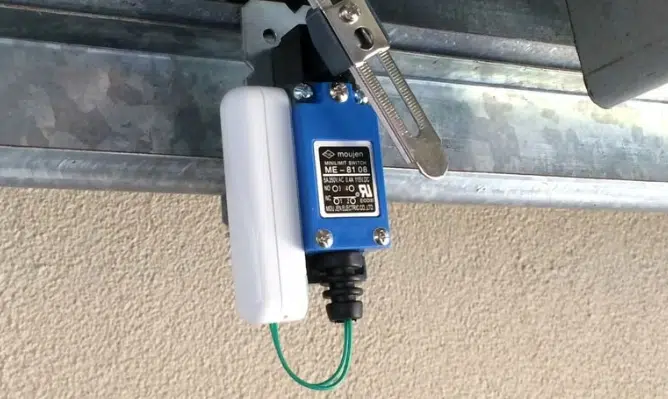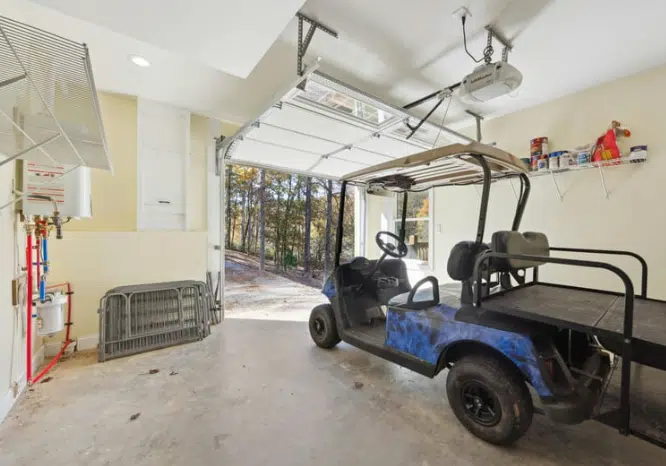Discover what a limit switch on a garage door is, how it functions, and why it’s essential for safety and performance.
Garage doors operate through a precise system of moving parts that must work in harmony. One often-overlooked component is the limit switch. This small but essential device controls how far the garage door travels during opening and closing. When calibrated correctly, it prevents the door from slamming shut or rising too far.

Understanding the role of the limit switch on a garage door is crucial for homeowners seeking to maintain the safety and reliability of their garage system. Faulty limit switches can cause performance issues such as doors not closing completely, reversing unexpectedly, or straining the opener motor unnecessarily.
In this guide, we explain what the limit switch on a garage door does, how it works, common signs of malfunction, and what steps to take if adjustments or replacements are needed. This information is valuable whether you’re performing routine maintenance or troubleshooting issues with your garage door.
What Exactly Is a Limit Switch on a Garage Door?
A limit switch on a garage door is a control mechanism within the opener that tells the door when to stop moving. Most modern openers have two limit switches—one for the fully open position and another for the fully closed position.
These switches are usually adjusted via screws or dials on the opener unit. When set correctly, the door stops just before reaching the floor or ceiling. This prevents damage to the door, opener, and surrounding components.
Whether you have a chain-driven, belt-driven, or screw-driven opener, the limit switch plays the same fundamental role. Learning how to adjust or identify issues with the limit switch on a garage door is a key part of regular garage door maintenance.
How a Limit Switch on a Garage Door Works
A limit switch is a critical safety and control component in a garage door opener system. It works by interacting directly with the opener’s motor to regulate how far the door travels during its opening and closing cycles. When you activate the garage door, the motor engages and begins to move the door along its tracks using a drive mechanism—such as a chain, belt, or screw drive. As this drive system turns, internal sensors or rotating cams within the opener monitor the door’s movement in real-time.
The limit switch is pre-programmed with specific stop points—one for the fully open position and one for the fully closed position. When the door reaches these designated points, the limit switch is triggered. This action cuts off the electrical signal to the motor, stopping any further movement. Without this control mechanism, the motor could continue to run, leading to possible damage or misalignment.
This safety feature ensures that the garage door:
- Doesn’t crash into the floor, which could cause structural damage or pose a safety hazard
- Doesn’t overextend beyond the frame, which might strain or break the opener system
- Doesn’t keep running the motor unnecessarily, preventing wear and overheating
When a garage door fails to close all the way, reverses suddenly after hitting the floor, or doesn’t open fully, it’s often a sign that the limit switch needs adjustment. Fortunately, this is usually a simple fix that doesn’t require replacing any major components. Many homeowners mistake this issue for a serious malfunction, but in reality, recalibrating the limit switch is often all it takes to restore smooth and safe operation. Checking and adjusting the limit switch should be one of the first troubleshooting steps when facing unusual garage door behavior.
Signs of a Faulty or Improperly Set Limit Switch
Recognizing the warning signs of a faulty or misadjusted limit switch on your garage door opener is essential for preventing unnecessary wear, costly repairs, or potential safety hazards. The limit switch controls how far the garage door opens or closes. When it malfunctions or is incorrectly set, various symptoms may appear.
The Door Doesn’t Close Fully or Reverses Unexpectedly
If your garage door stops short of the ground or reverses right after closing, the close limit switch may be set too high. This causes the opener to think the door has reached the ground when it hasn’t, triggering a reverse as a safety response.
The Opener Runs, but the Door Doesn’t Move Correctly

You may hear the motor running, but the door doesn’t open or close properly. This often points to incorrect limit switch signals or possible wiring issues between the switch and the motor.
The Door Closes Too Hard or Slams Shut
When the close limit is set too low, the door may continue closing past the proper point, resulting in a hard slam. This can damage the door or anything underneath it and pose safety risks.
The Motor Keeps Running After the Door Stops
If the motor continues running even after the door has come to a complete stop, the limit switch may not be signaling the motor to shut off. This can overwork the motor and lead to mechanical failure over time.
How to Address Limit Switch Issues
Most of these issues can be resolved without major repairs if caught early.
Recalibrate the Limit Switch
Many garage door openers have adjustment screws or dials that allow you recalibrate how far the door travels. Carefully follow the manufacturer’s instructions to reset the open and close limits.
Inspect for Wiring or Mechanical Damage

If recalibration doesn’t help, inspect the wiring or mechanism connected to the limit switch. Look for frayed wires, loose connections, or worn components that could be interfering with proper function.
Consider Replacing a Worn or Broken Switch
If the limit switch appears physically damaged or is no longer responsive after adjustment, it may need replacement. A new limit switch can restore proper door operation and prevent further issues.
How to Adjust the Limit Switch on a Garage Door Safely
If you’re experiencing issues, adjusting the limit switch may resolve the problem. Follow these general steps:
- Disconnect the power to the opener before making any adjustments.
- Locate the adjustment screws on the opener motor. Typically, these are labeled “Up” and “Down.”
- Turn the screws in small increments. Clockwise usually increases the door’s travel; counterclockwise decreases it.
- Reconnect the power and test the door after each adjustment.
- Repeat as needed until the door opens and closes at the correct points.
Always consult your manufacturer’s manual, as the process can vary between models. If adjusting the limit switch on your garage door doesn’t solve the problem, consider professional inspection.
When to Replace the Limit Switch
If your adjustments don’t hold or if the door behavior remains erratic, the limit switch may be faulty. Common reasons to replace it include:
- Mechanical failure or wear
- Electrical short or faulty wiring
- Persistent incorrect door movement
Replacing a limit switch is more complex than adjusting one and may require disassembling parts of the opener. If you’re unsure of the wiring or internal components, hiring a garage door technician is advised.
Frequently Asked Questions
What does the limit switch on a garage door actually do?
It controls how far the garage door travels during opening and closing by cutting off the motor once the preset limit is reached.
Why does my garage door reverse after hitting the ground?
This could be due to an improperly set limit switch, which tells the opener that the door hasn’t reached the correct closed position.
Can I adjust the limit switch on a garage door by myself?
Yes, if you’re comfortable using a screwdriver and following safety procedures. Refer to your opener’s manual for model-specific instructions.
Is the limit switch the same as the safety sensors?
No. Safety sensors prevent the door from closing on objects or people, while the limit switch controls travel distance.
How do I know if my limit switch is broken?
If adjustments don’t fix the door behavior or the opener continues running unnecessarily, the switch may be broken and require replacement.
Conclusion
The limit switch on a garage door plays a critical role in safe and effective door operation. When set correctly, it ensures your door stops precisely where it should, preventing damage and reducing motor strain. Ignoring problems with the limit switch can lead to costly repairs or even safety hazards.
By understanding how the switch works and identifying common issues, homeowners can take proactive steps to maintain their garage door system. Whether you’re adjusting it yourself or calling in a technician, prompt attention can restore optimal performance.
If your garage door isn’t operating smoothly, Grayson County Door & Gate offers expert service to inspect and resolve issues, including limit switch problems. We’re ready to help restore your garage door’s reliability.
End Note
Grayson County Door & Gate is your go-to source for professional garage door service throughout North Texas. We specialize in diagnosing limit switch issues and performing precise adjustments that restore your garage door to peak performance.
Explore more about our services and see real results in our gallery of successful garage door repairs. If you want to learn more about our experience and approach, visit our About Us page.
Ready to get started? Reach out today through our contact page or learn more on our homepage. Grayson County Door & Gate is committed to quality, safety, and reliable service you can trust.
Grayson County Garage Door Repair
1940 Everheart Rd, Bells, TX 75414, United States
+19035007205

